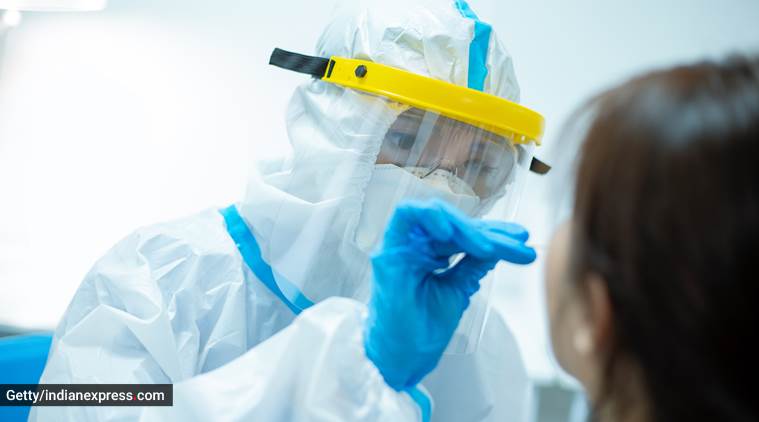Amid Omicron scare, here’s what you should know about common cold signs, treatment

In winters, the common cold — caused by rhinoviruses — afflicts a lot of people around the world. As we brave a new Covid wave this year, and with temperatures plummeting across northern states in the country, it is normal to get confused between common cold and Covid infection since both present similar symptoms.
Dr Sanjay Bhatia, ENT surgeon, Fortis Hospital Mulund, explains that the Omicron variant presents cold-like symptoms of runny nose, headaches, sneezing, sore throat, body aches, cough, fatigue with fever. “It is prudent to first rule out Omicron infection by doing a home Rapid Antigen Test or gold standard RT-PCR test. If positive, one should be treated accordingly. Once Omicron is ruled out, you can be treated for common cold, diagnosis of which is usually through history and physical examination; no aggressive workup is required,” he says.
According to the doctor, the rhinovirus infections are usually mild and self-limiting. Children are affected more due to their developing immune system. The virus spreads easily through droplets that are coughed or sneezed by infected persons and from fomites. Incubation period is usually 3 days before the symptoms develop, and it can usually last for a week or 10 days.
The common symptoms are:
– Nasal dryness and irritation
– Watery nasal discharge, sneezing and nasal congestion
– Nasal secretion may get thick and turn yellow or green
– Irritation of throat or sore throat
– Watery and itchy eyes
– Mild cough
– Low grade fever with chills
– Headache and generalised malaise, body aches
– Facial and ear fullness or pain
Management is usually symptomatic, with:
* Rest and plenty of fluids
* Good nutrition
* Nasal decongestant and antihistamines, as prescribed by the doctor
* Cough suppressant, as prescribed by the doctor
* Analgesic and antipyretic medication, as prescribed by the doctor
* Antibacterial agents are not effective unless there is superadded bacterial infection
* Petroleum jelly for chapped skin around nose and lips
 Get yourself tested for Covid before you begin treatment for any other kind of viral infection. (Photo: Getty/Thinkstock)
Get yourself tested for Covid before you begin treatment for any other kind of viral infection. (Photo: Getty/Thinkstock)
What are the complications?
Dr Bhatia says common cold should not lead to rhinosinusitis, where the nasal secretions turn yellow to dark green, causing facial pain and thick post-nasal discharge.
– One should avoid blowing nose or sniffing hard as it may lead to ascending infection into the middle ear space causing Acute Otitis Media (AOM), which causes severe ear pain and sometimes ear drum perforation and discharge.
– Tender and swollen neck glands.
– It can also lead to exacerbation of reactive airway disease in children and adults.
– It may also cause bronchitis and other infections like pneumonia.
Prevention
The doctor explains that since the disease is contagious and spreads by hand-to-hand contact and airborne droplets, it is important to follow appropriate measures:
* Hand washing with soap
* Avoidance of finger – eye – nose contact
* Use of tissue while sneezing, coughing, and discarding the tissue immediately
* Avoiding crowded areas and resting at home
In addition to the aforementioned points, keep in mind the following:
1. Common cold is a viral infection causing inflammation of nasal and throat mucus membrane.
2. It is a self-limiting disease and treated symptomatically; antibiotics won’t work.
3. Best way to prevent this is frequent hand washing and avoiding crowded areas.
📣 For more lifestyle news, follow us on Instagram | Twitter | Facebook and don’t miss out on the latest updates!

